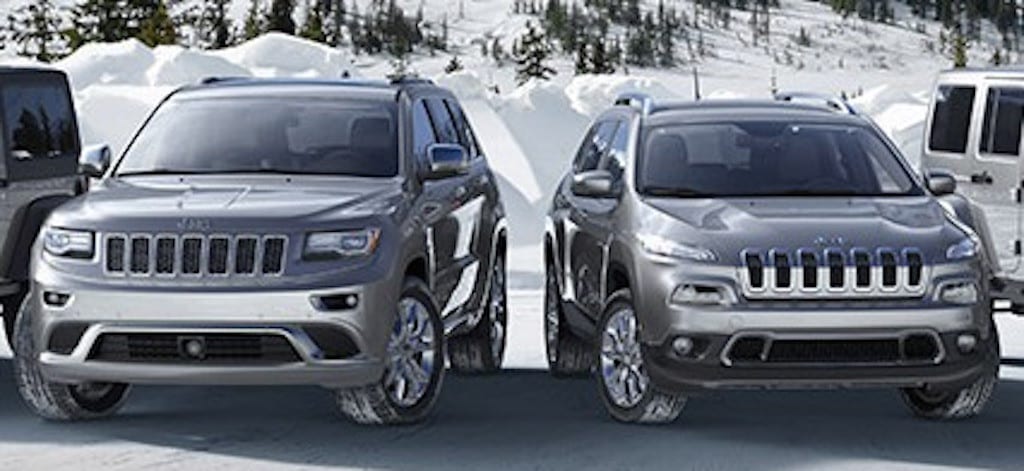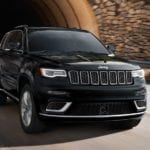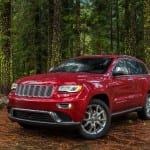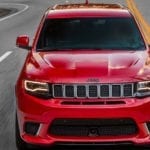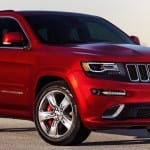There was a time when the Jeep Cherokee and Grand Cherokee were both riding the road in harmony. The Grand Cherokee offered more room and power while the smaller Cherokee offered better handling. That was the case until 2002, when the regular Cherokee reinvented itself as the Liberty.
Since last year, the Liberty was scrapped and the original nameplate was brought back from the dead. The Cherokee still resembled it’s many predecessors, but Jeep decided to make the model a bit larger. Since the Grand Cherokee was essentially designed to be a larger version of the original Cherokee, how do the two SUVs now differ?
There’s actually a variety of differences between the two vehicles. Whether it’s the various standard and optional features, different engine sizes, roomy interiors, or (of course) the price, there are plenty of attributes that set the two vehicles apart. Of course, there are also a handful of attributes that are shared by the two SUVs.
Regardless, it can be a difficult distinguishing between the two, much less choosing which of the vehicles to purchase. Before you decide to visit your local Jeep Cherokee dealers, take a look at our comparisons below. You should have a better idea of which vehicle is right for you, and that could lead to you leaving the lot in your new Jeep vehicle…
Exterior
It’s hard to tell the two SUVs apart. After all, the Grand Cherokee was designed as a successor to the regular Cherokee, so the two vehicles share a lot of aesthetic details. If you look close enough, however, you should be able to spot a couple of differences.
As Doug DeMuro of AutoTrader.com explained, the Cherokee features a unique three-headlight configuration, while the Grand Cherokee comes with the more popular single headlight/fog light combination. The vehicles also include different types of wheels, as Cherokee comes with 17-inch aluminum wheels while the Grand Cherokee comes with 17-inch alloy wheels.
Of course, being a bigger SUV, the Grand Cherokee is about 500 pounds heavier than it’s little brother. The power and weight leads to the GC having a superior towing capacity (7,400 pounds compared to 4,500 pounds), and it also means the larger SUV can be used for off-roading. The Cherokee, meanwhile, does not offer any off-roading features or capabilities.
Otherwise, the Grand Cherokee basically just looks like a more muscular, stronger version of the Cherokee. Even the offered colors are the same, unless you consider a difference between cashmere pearl/cashmere and black forest green/eco green.
Interior
The interior is where the two cars really differ, as the larger Grand Cherokee obviously offers a lot more room. The GC tops the Cherokee in width (76.5 inches/73.2 inches), height (69.3 inches/65.7 inches), length (189.9 inches/182 inches) and wheel base (114.8 inches/106.3 inches). This results in the Grand Cherokee having the roomier interior, as DeMuro described the Cherokee as more “claustrophobic” and not offering the same amount of rooms as the Grand Cherokee’s “generous levels.”
This fact is applicable to the cargo space, as the Grand Cherokee can offer 36.3 cubic feet of cargo room (compared to the 24.8 cubic feet offered in the Cherokee). The discrepancy gets even larger when comparing the maximum cargo capacity, as the Cherokee’s 54.9 cubic feet of room trails the Grand Cherokee’s 68.3 cubic feet of room.
Interior/Exterior Features
The two SUVs share a lot of the same interior features, but there are some amenities that only come standard in specific vehicles. The Grand Cherokee, for example, comes with climate control settings and keyless ignition, and there’s also the option to add a built-in hard drive and Roadside Assistance. These features are either optional or unavailable in the standard Cherokee.
Of course, the smaller SUV has some unique features of it’s own. A premium sound system is unique to only the Cherokee, and the optional parking assistance isn’t even offered for the Grand Cherokee. Shifting to the exterior features, all-season tires come standard on the Cherokee, but they’re optional for the Grand Cherokee. Reversely, a power glass sunroof is optional for the Grand Cherokee but unavailable for the regular model.
Among the features that both vehicles offer are bluetooth capabilities, cloth upholstery, powered heated/cooled seats (optional) and satellite radio (optional). In regards to the technology, both vehicles come with adaptive cruise control, a navigation system and automatic high-beam functions.
Mechanical
Since the Cherokee is the smaller of the SUVs, it shouldn’t be a surprise that the two available engines are dwarfed by the engines of the Grand Cherokee. The base-level engine that accompanies a Cherokee is the 2.4-liter 4-cylinder engine, capable of producing 184 horsepower and 171 ft-lbs of torque. The four-cylinder also offers 22 miles per gallon in the city and 31 miles per gallon on the highway. If potential buyers want something with a bit more power, they could opt for the 3.2-liter V6 engine, which will max out at 271 horsepower and deliver an estimated 21 mpg city/29 mpg highway.
The Grand Cherokee, meanwhile, offers four engines, including a standard 3.6-liter V6 that can produce 290 horsepower and 260 ft-lbs. of torque while also delivering around 20 combined mpg. You could also go with the fuel-efficient 3.0-liter turbodiesel V6 engine (featuring a 21 mpg city/28 mpg highway), the powerful 5.7-liter V8 engine (capable of producing 360 horsepower), or a 6.4-liter V8 that can top out at an incredible 475 horsepower. That final engine is only offered in the Grand Cherokee SRT, but the impressive specs make it worth mentioning.
There’s a variety of other differences between the two vehicles, including the drive type (Cherokee offers front-wheel drive, Grand Cherokee offers rear-wheel drive), fuel type (Cherokee requires regular unleaded, Grand Cherokee requires flex-fuel), and their transmission (Cherokee has nine-speed shiftable automatic, while Grand Cherokee has eight-speed).
Safety
There’s consistency in both the SUVs when it comes to safety, as the two vehicles share (mostly) the same features. There’s the forward-collision warning system that can manipulate the brakes to prevent crashes. There’s also a lane-departure warning, a blind sport monitoring system, and a rear cross-traffic alert system.
The Grand Cherokee doesn’t include all of the safety features that are included with the Cherokee. The most popular feature omitted from the Grand Cherokee is the automated parking system, which safely parks your SUV for you.
Price
If you haven’t figured it out by now, the Grand Cherokee is the more expensive option. The MSRP for a 2015 model runs around $31,000, while the MSRP on the 2015 Cherokee is about $24,100. The Grand Cherokee’s price tag comes in above several of it’s competitors, but considering the combination of fuel-efficiency, features (both interior and exterior), and off-roading capabilities, the uptick in price should be expected.
There’s no denying that the pair of Jeeps are both impressive vehicles, but we’ve hopefully eased the difficulty of the buying process.
After reading this post, maybe you’re convinced that the smaller Cherokee is the choice for you. If you prefer something a bit larger and more powerful, you should consider dishing out the extra cash and opting for the Grand Cherokee. As you’ve learned, you won’t be making a bad decision either way.
